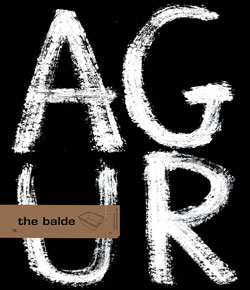7 blade runner
Blade Runner 1982. Yes, I too think it’s amazing. The film, loosely based on Philip K- Dick’s novel Do Androids Dream of Electric Sheep, was released more than 30 years ago. They’d just started showing it at the cinemas, the chance to see it on the big screen and without dubbing was unmissable, and I walked into Trueba Cinema in Donostia on one of those sad nights at the end of winter. I like Blade Runner more each time I watch it. How can such a complex film be based on such a simple script? How can a science fiction film still be so believable and, at the same time, so amazing thirty years later? Why is Blade Runner –such an imperfect film– still so fascinating?
The story takes place in 2019. It’s clear that many things we see in the film will not be around in 2019, but I’d say it got the future much better than any other science fiction film ever has. Anyone who’s walked around any of those megalopoleis scattered around the world at night –Shanghai, Dubai, Hong Kong, Mexico City– what I mean. The world being created there is the world of Blade Runner.
Just as there are different models of replicants, there are also different versions of the film Blade Runner. Seven, in fact.
1- 1982, the first version: Just a few inhabitants of Denver and Dallas had the privilege of seeing the first version of the movie. The producers, who had organized the screenings, thought the film was too dark. In that version the famous “happy ending” does not appear.
2- 1982, the second version: The producers put on another screening at San Diego and, as well as cutting three scenes, added the “happy ending”.
3- The US première version: Worrying that nobody would understand a thing, the producers added a lot of voice-overs. They insisted on the “happy ending” and Ridley Scott got angry.
4- International version: The same as the US version, but with the three violent sequences
restored.
5- Light version: A further two minutes were cut from the US première version to make it less violent.
6- 10th anniversary version (1992): It was the perfect excuse to release the Director’s Cut. Ridley Scott removed the happy ending and added the scene with the unicorn.
7- In 2007 Scott presented his definitive This is the version they’ve just shown in the cinemas. Many of the voice-overs have been removed, there’s no trace of the happy ending and some music has been added.
The sequel to Blade Runner is going to be filmed in 2016 and premièred in 2017. Obviously, we’ll be going to see it. But it will never be a patch on the original (in any of its versions). Because Blade Runner is mysterious and magical. The actors in the film – without doing anything all that special – gave the performances of their lives. Because the director, using no type of formula, made a keystone movie as if he were an alchemist. Because we, the spectators, are still hypnotised by this story of a society and of love.
The story takes place in 2019. It’s clear that many things we see in the film will not be around in 2019, but I’d say it got the future much better than any other science fiction film ever has. Anyone who’s walked around any of those megalopoleis scattered around the world at night –Shanghai, Dubai, Hong Kong, Mexico City– what I mean. The world being created there is the world of Blade Runner.
Just as there are different models of replicants, there are also different versions of the film Blade Runner. Seven, in fact.
1- 1982, the first version: Just a few inhabitants of Denver and Dallas had the privilege of seeing the first version of the movie. The producers, who had organized the screenings, thought the film was too dark. In that version the famous “happy ending” does not appear.
2- 1982, the second version: The producers put on another screening at San Diego and, as well as cutting three scenes, added the “happy ending”.
3- The US première version: Worrying that nobody would understand a thing, the producers added a lot of voice-overs. They insisted on the “happy ending” and Ridley Scott got angry.
4- International version: The same as the US version, but with the three violent sequences
restored.
5- Light version: A further two minutes were cut from the US première version to make it less violent.
6- 10th anniversary version (1992): It was the perfect excuse to release the Director’s Cut. Ridley Scott removed the happy ending and added the scene with the unicorn.
7- In 2007 Scott presented his definitive This is the version they’ve just shown in the cinemas. Many of the voice-overs have been removed, there’s no trace of the happy ending and some music has been added.
The sequel to Blade Runner is going to be filmed in 2016 and premièred in 2017. Obviously, we’ll be going to see it. But it will never be a patch on the original (in any of its versions). Because Blade Runner is mysterious and magical. The actors in the film – without doing anything all that special – gave the performances of their lives. Because the director, using no type of formula, made a keystone movie as if he were an alchemist. Because we, the spectators, are still hypnotised by this story of a society and of love.



